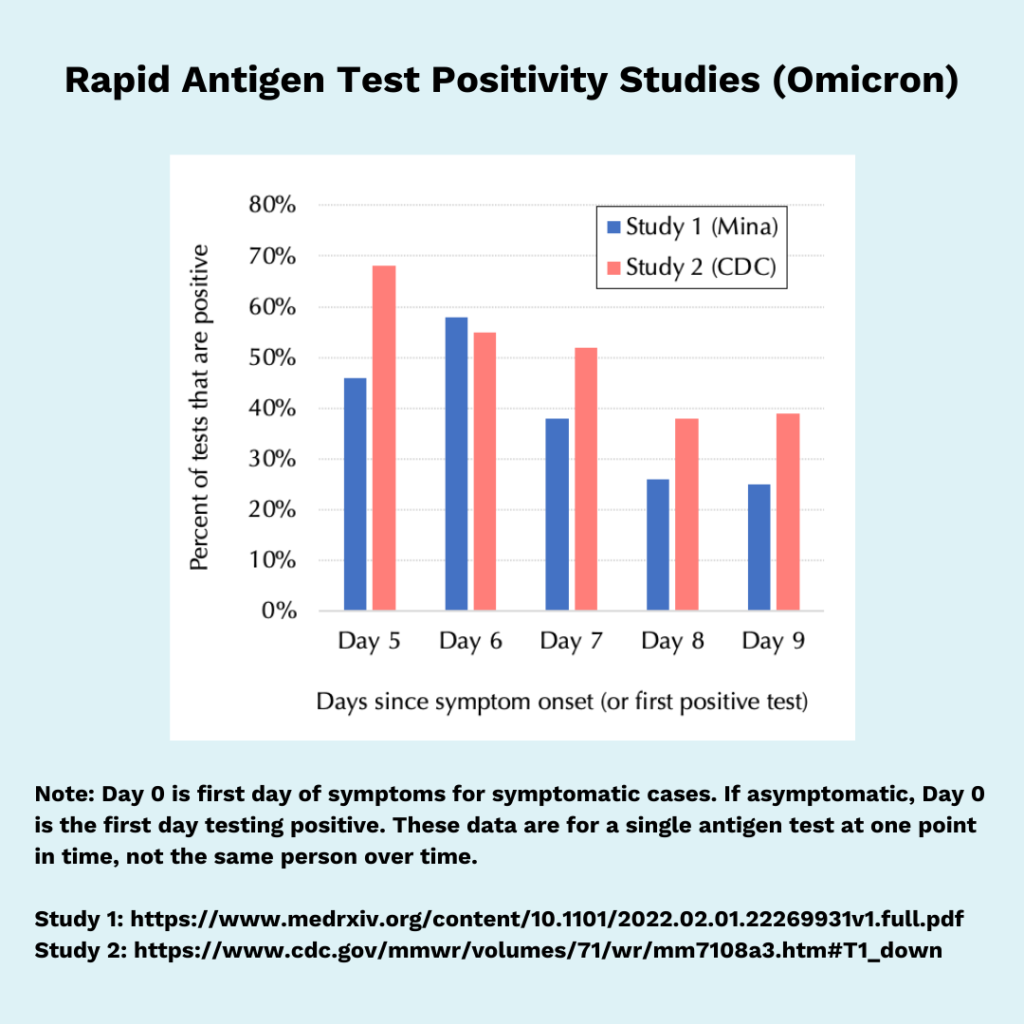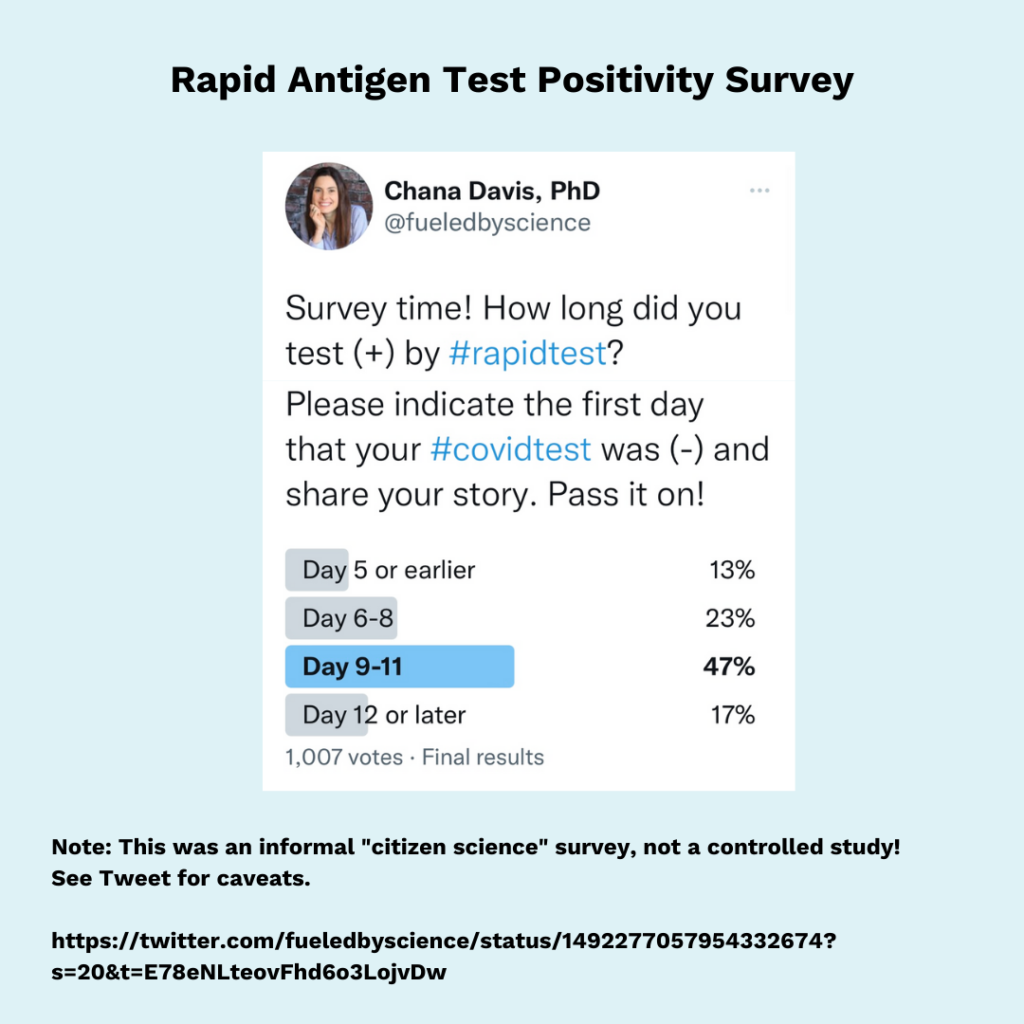A: If it’s been fewer than 5 days since your COVID-19 infection began, you’re out of luck. Please stay home! During the Day 5-10 window, your odds of being cleared for travel are roughly 50-50 for rapid antigen tests. After two weeks, most of us can breathe easily on test day.
👉🏽Note: For molecular tests like PCR, test positivity timelines are often longer and warrant a separate post.
WHAT TO EXPECT
Rapid antigen test timelines vary a lot from person to person and between variants. Here is a rough guide to what to expect with Omicron*, as far as chances of testing positive on an antigen test:
➡️ Days 0-4: About 1 in 2 (~25-75%)
➡️ Days 5-10 into infection: About 1 in 2
➡️ Days 11-14 into infection: About 1 in 6
➡️ Day 15 or longer: Rare (unless immunocompromised)
*Current Omicron studies have focused on the BA.1 lineage. Since Omicron BA.2 has one more N protein mutation, there could be a minor impact on antigen performance. More studies are needed to flesh this out.


❗People who are immunocompromised due to health conditions or medications often take longer to clear COVID-19 infections and test negative.
🤒Knowing your Day 0 is key. If symptomatic, Day 0 is the first day with symptoms regardless of when you tested positive. If asymptomatic, Day 0 is the first test positive day. If you know your exposure date, then you can also use 3 days after this as Day 0.
MAKING SENSE OF RAPID ANTIGEN TESTS
⚠️Symptoms do NOT predict rapid antigen test positivity. The antigen test signal often peaks around Day 4-6, after the worst symptoms have passed. Even asymptomatic people and those who are vaccinated can test positive for a long time.
🦠In general, a positive antigen test means that you are likely contagious because your swab is loaded with intact virus. However, it’s unclear whether a late rapid positive test (after Day 😎 still predicts contagiousness, as we don’t see much spread after this, and most rapid test studies have focused on the first week or so.
🤔Negative antigen tests are trickier to interpret. In the first few days, false negatives are common, so a single negative rapid test can’t rule out COVID-19. Repeat testing is key. In the Day 5-10 window, a negative rapid test is an encouraging sign that you have cleared the virus, but, again, it’s not a perfect test.
😷Since rapid tests can miss some contagious cases, it’s best to use layers of protection, like high-caliber masks to protect others for a full 10 days.
🔥Pro Tip: If possible, monitor your infection in the week leading up to your flight. If you get a strong band 2-3 days before your flight, that spells trouble, as it usually takes several days to go from strong, to moderate, to faint, then zero.
THE BOTTOM LINE
✈️Everyone should be able to travel safely, including unvaxxed kids under 5, people who are immunocompromised and others with health risks. Rapid testing before a flight offers a powerful layer of protection for all travelers and the workforce that makes your vacation possible. As public health rules loosen, the onus is on each of us to protect others.
Bon voyage!
PS Thanks to Nerdy Girl Chana of Fueled by Science for this timely post. She is on her first trip in two years right now, having cleared all the COVID testing hurdles!!
References:
High Rates of Rapid Antigen Test Positivity After 5 days of Isolation for COVID-19
Rapid Test Survey on Twitter by @fueledbyscience

Related Posts from Those Nerdy Girls:


